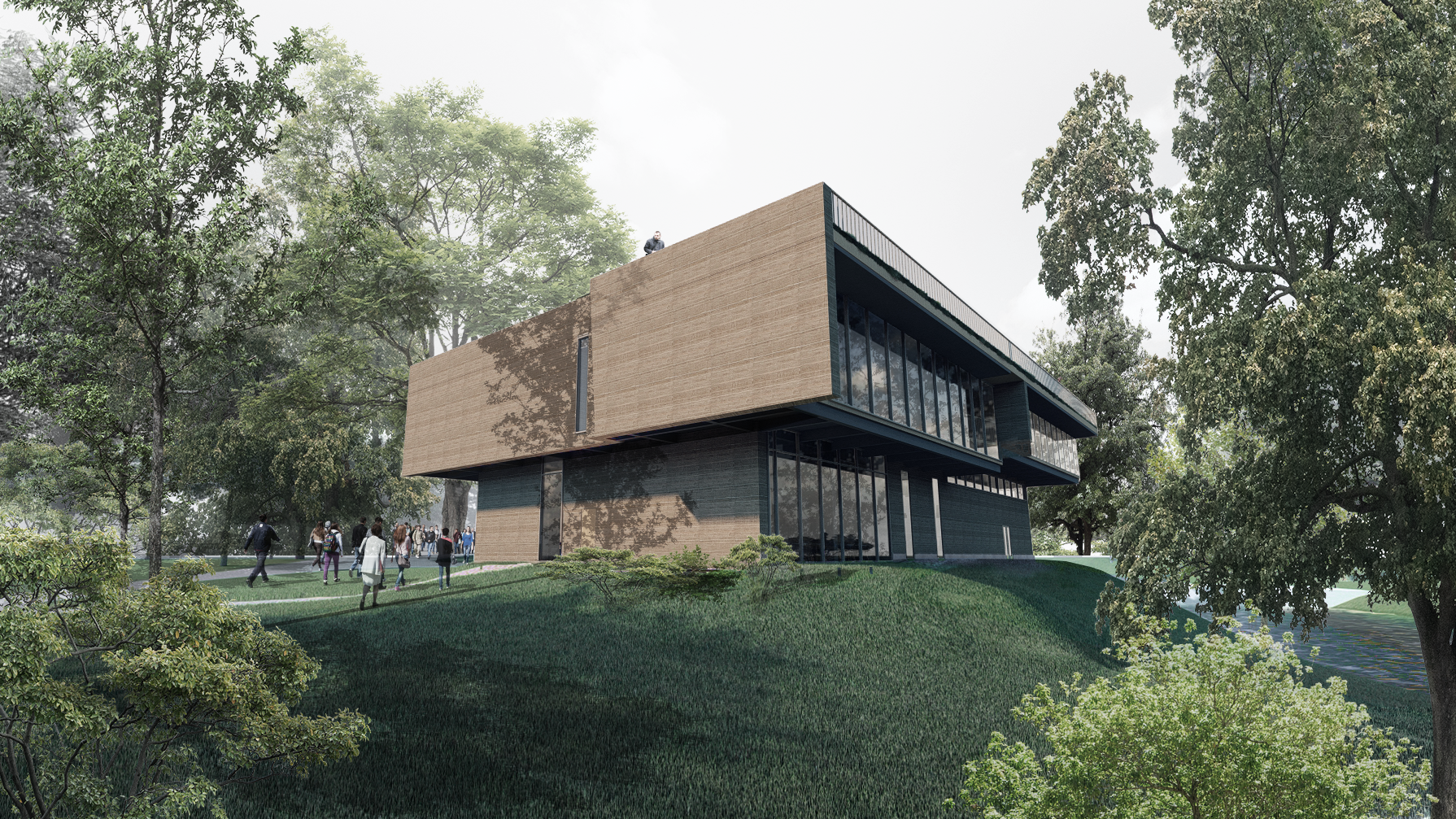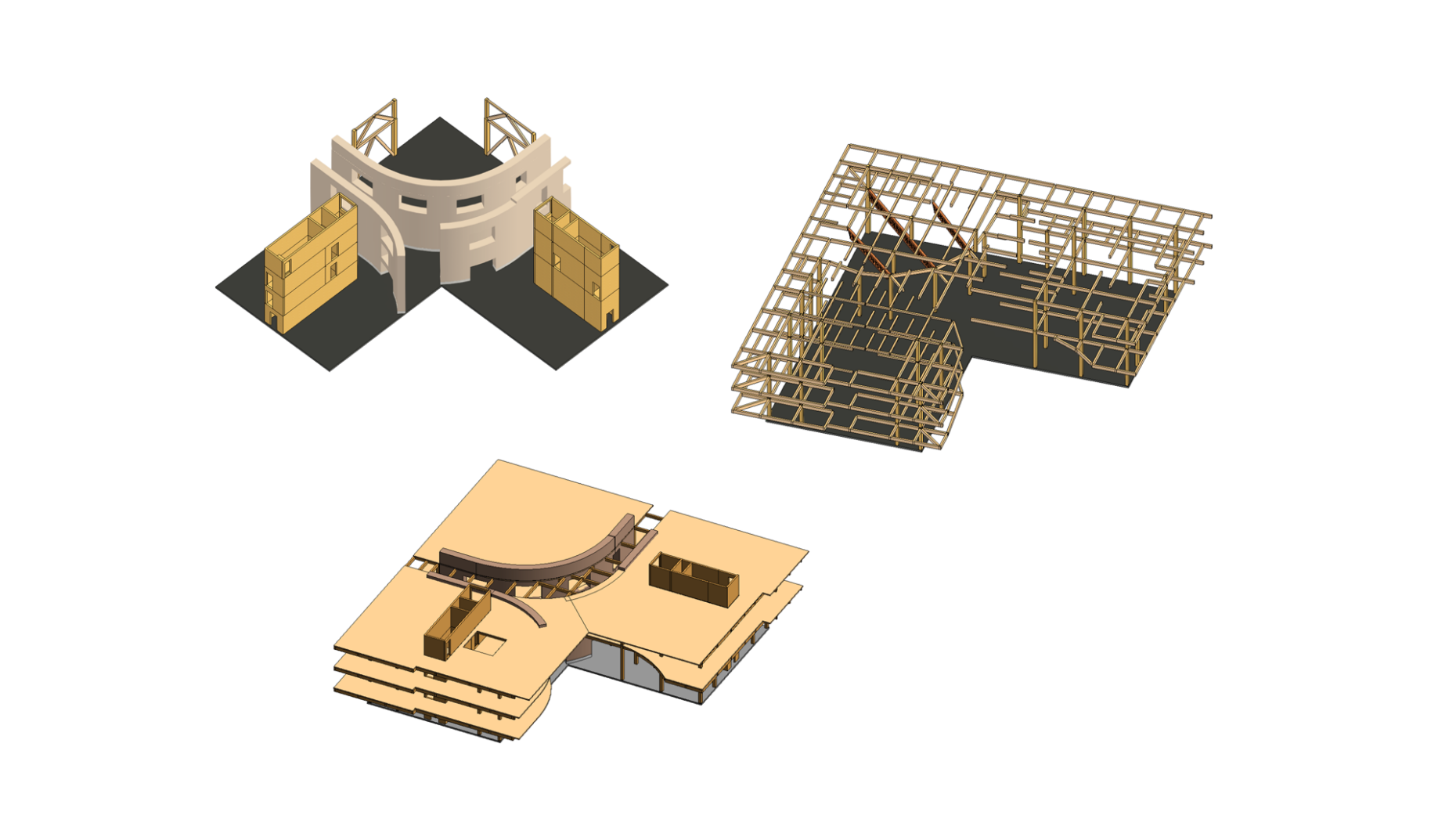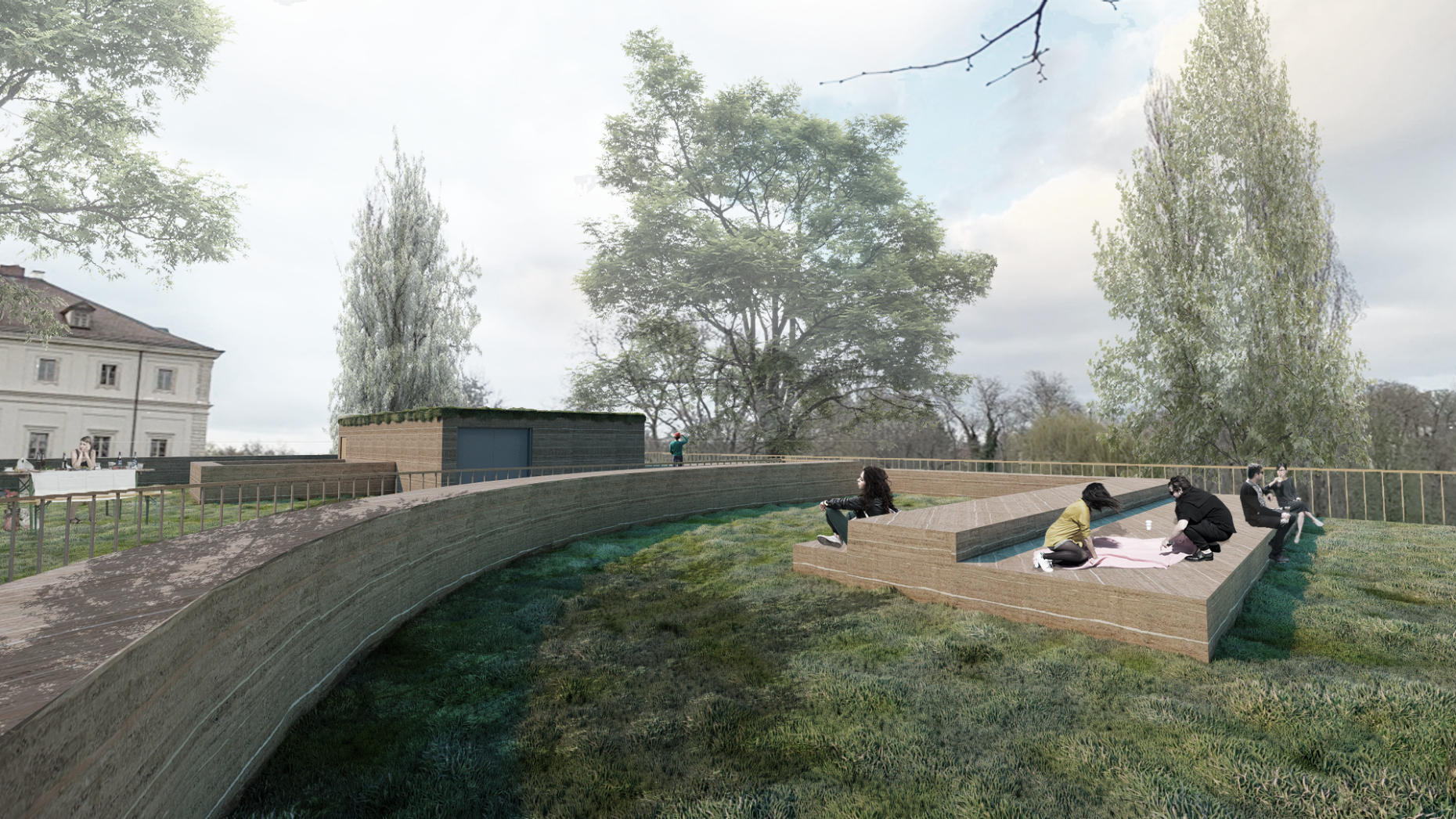Why wouldn’t you build with rammed earth? - an IBI student perspective
From January until May 2021, IBI student Lisa Oswald participated in Stanford University's AEC Global Teamwork course. Below is a summary of the final result and a reflection on the experience from her perspective.
Not only since Greta Thunberg started the #FridaysForFuture in 2018, the AEC industry has been looking at more sustainable construction materials and techniques. Materials are inherently sustainable, however, the invention of steel and concrete, starting in the 1800s, made it apparent that sometimes unsustainable man-made materials can have fabulous advantages. Little known to the industry at the time was the negative impact of using these materials. And thus, we once again are investigating historically used sustainable alternatives.
Being aware of sustainability was also one of my team's goals when designing our rammed earth building for Stanford University's AEC Global Teamwork course. Following the Integrated Project Delivery principles, this course focuses on multi-disciplinary and collaborative teamwork between architects, structural engineers, MEP, construction managers, and life cycle financial managers. The course was comprised of four teams with students from universities from all over the world. The participation of an ETH student is supported by the chair of Innovative and Industrial Construction and the Chair of Sustainable Construction under the direction of Prof. Hall and Prof. Habert, to whom I give a heartfelt thank you for allowing me to participate and for supporting me in many ways.
After being chosen to partake in the 28th Global Teamwork course led by Dr. Renate Fruchter, I was provided with the newest VR (Virtual Reality) equipment, and the course started with an intense four-day online kick-off event in January 2021. I met my six teammates forming Team River, the owners of our project, and was informed about the characteristics and requirements of our project. Team River’s site is in Weimar, Germany near the river Ilm in Goethe Park, with the hazards of a shallow water table, flood zone, and UNESCO world heritage city. Our goal was to design a university building for collocated and online courses with a maximum building height of 9.1 m. We were given certain requirements for functional spaces and a square and an L-shape footprint. On top of that, industry partners sponsored three interesting challenges: Parametric Adaptability (Buro Happold), Sustainability and Equity (AR Green Consulting), and Buildings as Products (DPR Construction).
With the help of many mentors from the partner universities, we started with Concept Development in the winter quarter, in which we worked on two alternatives for each footprint, and in the end, evaluated the four alternatives using a decision matrix. Our winning concept was Next Year’s Spring. During the Project Development phase in the spring quarter, we focused on developing it. Its name refers to a poem by Goethe that inspired our design. It led to our concept goals of bridging the gap between the past and the future by building with rammed earth and following a sustainable construction process. The second big idea was intergenerational equity, which stands for conserving fairness and resources for future generations. It was implemented by teaching the next generation workforce through a VR lab about building with rammed earth and other forgotten sustainable materials.

Furthermore, we focused on winning the three challenges and meet our team goals. We chose low-carbon materials such as rammed earth, softwood framing, CLT panels for floors and shear walls. The material choice was verified using the BHoM LCA tool, which measures the embodied global warming potential of our building. The creation of a small kit of parts, including rammed earth wall panels, CLT panels, columns and beams, ducts, and curtain wall panels, resulted in 53% prefabrication. Our architectural rammed earth walls were self-performed by the next-generation workforce in our facility close to the site. The load-bearing walls are prefabricated by professionals. Bauhaus University in Weimar supervised the quality assurance and control for the rammed earth blocks. Using parametric modelling we identified the geometry of the rammed earth walls considering the reuse of the formwork, static use, and vehicle constraints. The MEP system selection was driven by the local environment, energy efficiency, and unique properties of our building. Rammed earth is a sensual and sustainable material; it regulates indoor humidity and provides a good thermal mass. Thus, we chose a ground source heat pump and dedicated outdoor air system as our primary system, and displacement ventilation, radiant floors, and chilled beams for secondary systems. With our green roof, we added a new layer to the park, providing a refuge for users and a habitat for insects.
A sustainable construction process and local suppliers were key goals for Team River. We met this by using the supermarket approach that connects off-site storage and fabrication, as well as using 93% of Small Medium Enterprises. Using software such as ALICE Technologies and ManufactOn allowed us to optimize our schedules and logistics. A liquidity plan helped to find the best value for money and saved us 21’000 Euros.
With the final version of Next Year’s Spring, we did not only reach DGNB platinum (a certificate measuring sustainable construction), but we also won two of the challenges: Sustainability and Equity, and Parametric Adaptability. In addition to these awards, I have improved my skills in structural engineering, teamwork, communication, and collaboration. I have expanded my network on a professional and personal level and met amazing people from all over the world. Last but not least, I learned to implement an ancient construction technique by building with rammed earth and discovered its numerous benefits and positive impact on our environment. The construction industry should focus more on this natural and sustainable alternative, and I dare ask the question: Why wouldn’t you build with rammed earth?

View Download Lisa's presentation on the IC YouTube channel
For more information, please check
Download PBL Lab Stanford University
Download AEC Projects (this year’s presentations should be uploaded soon)
The Chair of Sustainable Construction intends to ground sustainability in all disciplines involved in the built environment. For more information visit our website

